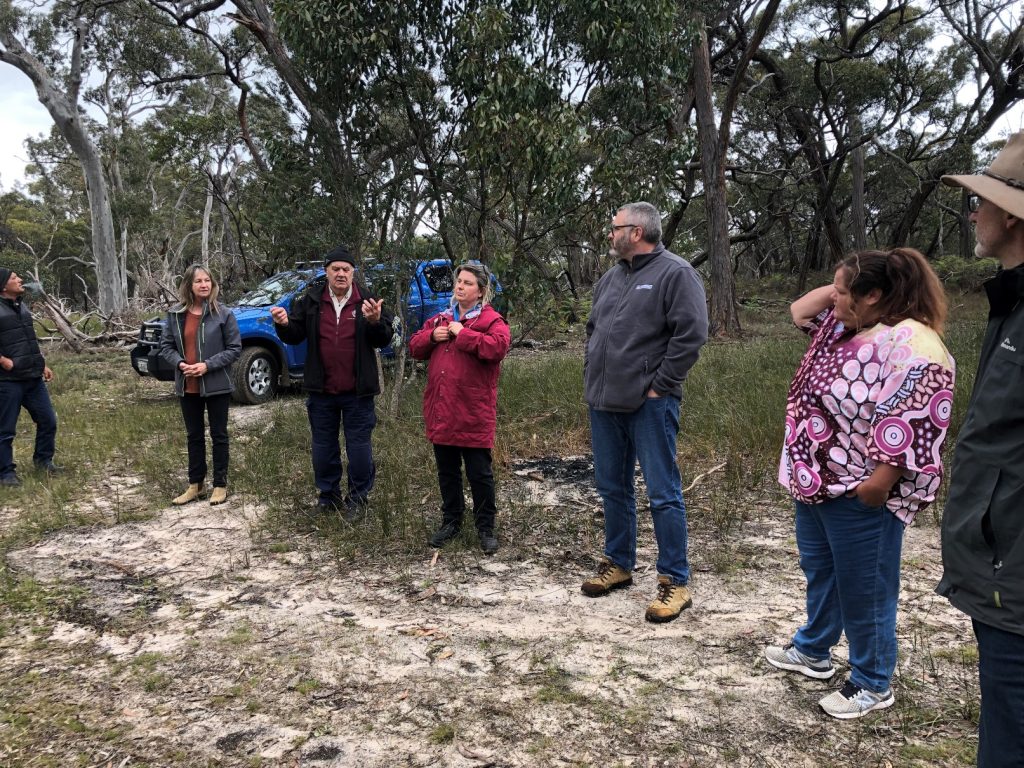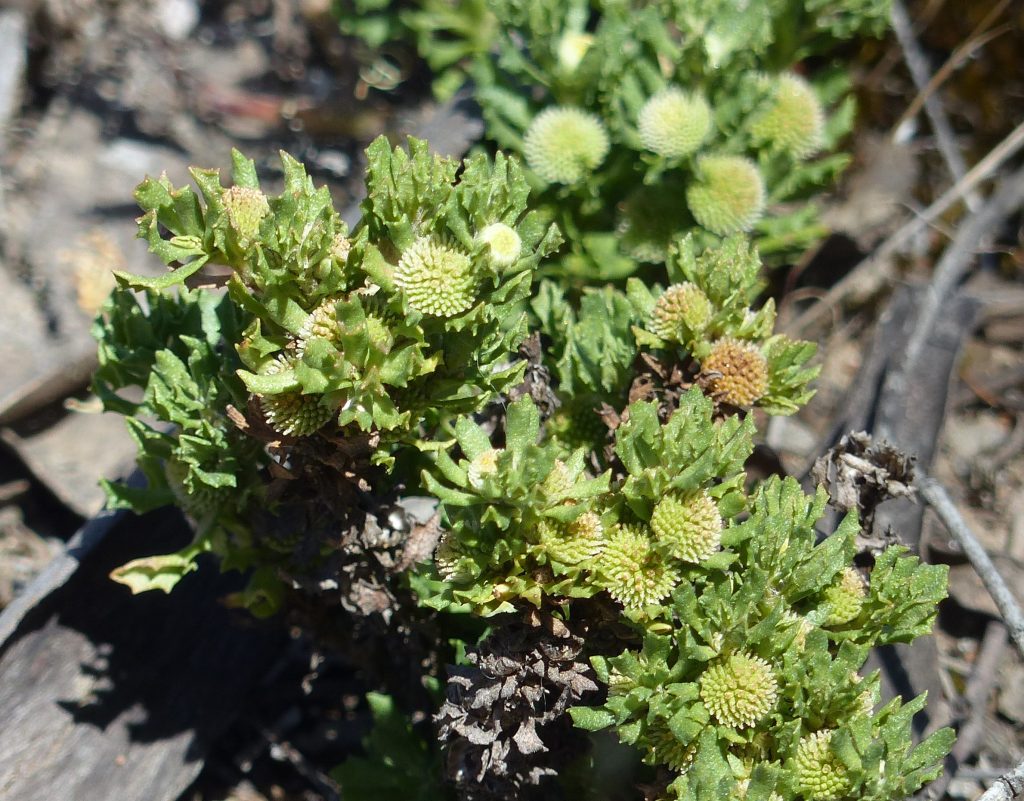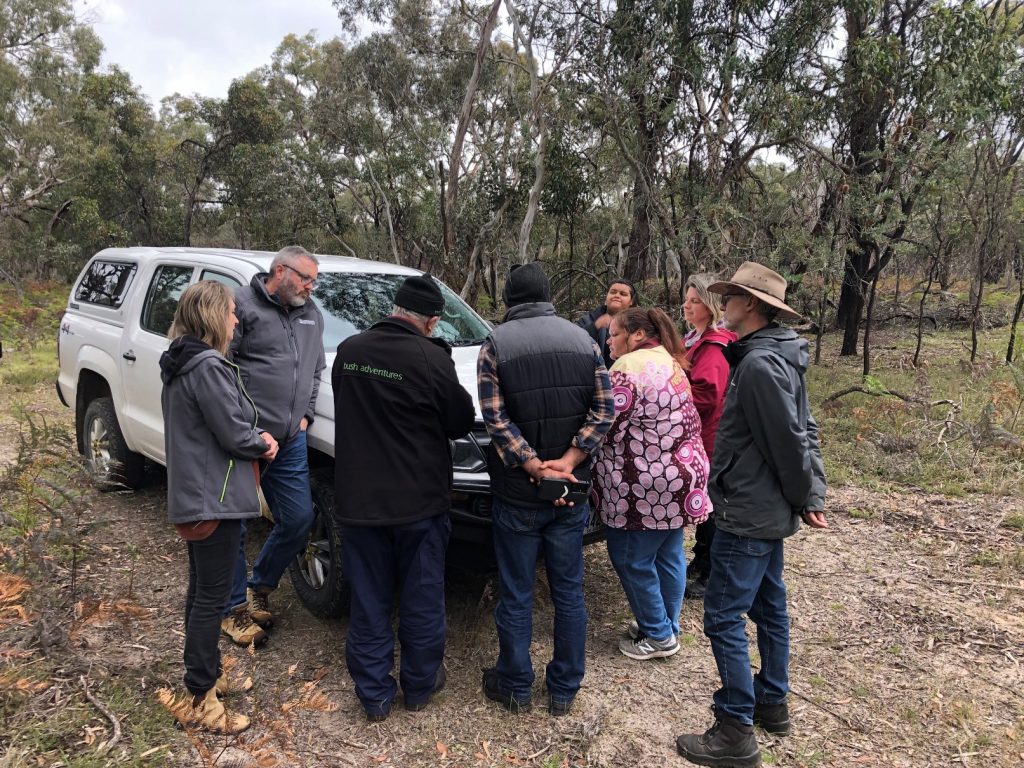Repairing the past at private land conservation sites in the upper South East
NGT has teamed up with three other landholders in the Binnum-Bangham district (the Jones, Baulderstone, and Brewer families), plus Burrandies Aboriginal Corporation, Limestone Coast Landscape Board, and other community members and organisations to repair the impacts of past land management actions across four reserves in the upper South East of South Australia (including NGT’s Eaglehawk Waterhole). Activities will take place over the next 18 months across the four Heritage Agreement (conservation covenant) properties with support from the Revitalising Private Conservation program, led by Nature Foundation.
Key short-term actions are to: continue engagement with the local First Nations community, linked to seasonal calendar; address surface water issues created by dams on one property by improving seasonally wet flat flora diversity; planning and implementation of a regular but sympathetic burning program (with cultural considerations) to encourage “on Country” experiences; reduce the cover of woody overstorey and increase herbaceous diversity in woodland and heathland areas; and revegetate disturbed sites.
The first activity in this project was to hold a community day at Binnum to walk over Country and explore the various management options that could benefit the bush and involve our First Nations people. The SE Aboriginal Focus Group (SEAFG) were led around Binnum Bushland by the property’s owners Ken and Katrina Jones, who showed the special habitats, management issues, and the results of fires which have occurred on the property over the last 10+ years.

Our first stop was at a seasonal herbaceous wetland site where we found a population of Old Man’s Weed or Sneeze Weed (Centipeda cunninghamii). This plant, as explained by Uncle Doug Nicholls, is an important medicinal plant for our First Nations people. Uncle Doug explained to the group how the plant is used to help with healing illness and improving general well-being.

Sneeze Weed, one of the many Indigenous use plants found at Binnum Bushland 
Swamp Daisy, one of the many plants to benefit from more water in seasonal herbaceous wetlands.
The group knelt down to look and smell the plant which was growing low to the ground around the waterhole. We also saw other bushfood and cultural use plants at this location like Swamp Daisy (Alittia cardiocarpa).

Uncle Ken spoke about where surface water flows at the waterhole; as the wetland fills up, the waterhole (or dam) can only begin to drain water off the wet flat once its full. He showed the group and explained how a small constructed blockage at the entrance to the waterhole essentially prevents most of the water in the wetland from draining into the dam. This then leaves an increased depth over the broader wetland area helping to improve the inundation period and depth resulting in a greater native plant diversity and resilience of this habitat type, especially during drier periods. Other landholders in the district are encouraged to maintain and increase plant diversity by doing this too.
First Nations peoples are known to have managed the landscape using fire prior to colonisation, and fire remains a potential tool in the management of remnant native vegetation. Areas at Binnum Bushland that have burnt in recent years are showing positive results. Crouching down for a closer look we could see a broad diversity of understorey plants that offer food resources for animals (including insects). This project aims to use fire in a targeted way, at both Binnum Bushland and Eaglehawk Waterhole, to achieve an improvement in bushfood diversity and minimise the shrubbing up of open woodland areas.

The target plant groups include bushfood plants such as annual and perennial bulbous species commonly harvested by First Nations peoples, plus weaving and medicinal plants found in dry soils through to damp areas.
Late in the afternoon, the bonnet of one of our cars made a makeshift table, as we all stood around to look at maps showing two fires on the property, noting the quick responses by Country Fire Service to extinguish them each time. Thankfully the burn scars are beginning to slowly fade as the bush regenerates but interestingly creating management dilemmas along the way.

Activities over the coming months will include:
- Flora assessments at all four properties, including for proposed burns in autumn next year, plus fauna surveys to address any species that might be impacted or benefit from these fires.
- Walk on Country (with members of the SEAFG) at the most northern property (Baulderstone).
We thank Robyn Campbell from Burrandies Aboriginal Corporation, and David New from Limestone Coast Landscape Board for inviting us to the SEAFG meeting at Naracoorte and for including this walk on Country to build relationships around burning and cultural use plants in the Binnum and Bangham districts.
This project was funded through the South Australian Government, devolved by the Revitalising Private Conservation in South Australia pilot project – working in partnership with Nature Foundation, Livestock SA, Trees For Life, Nature Conservation Society SA and Conservation Council SA.
